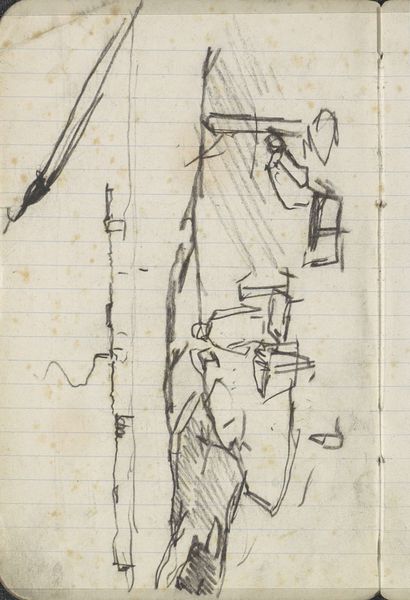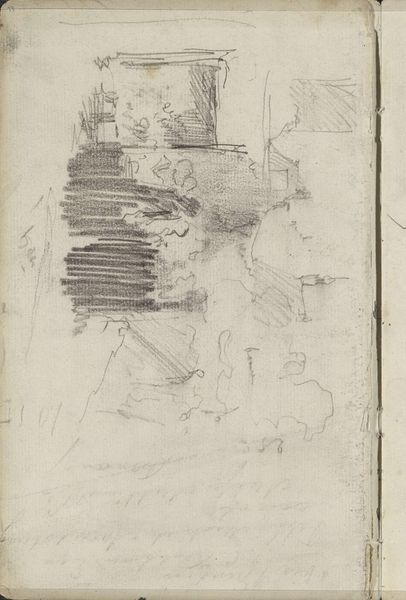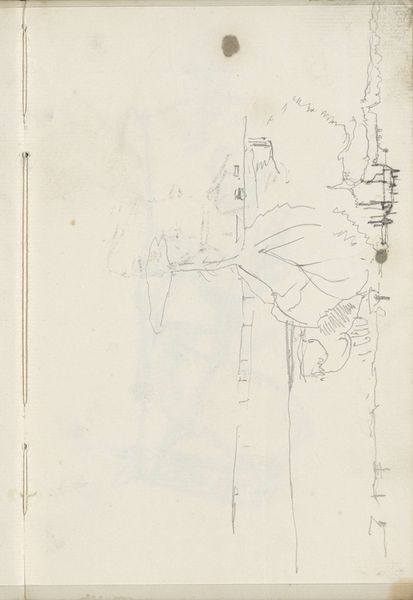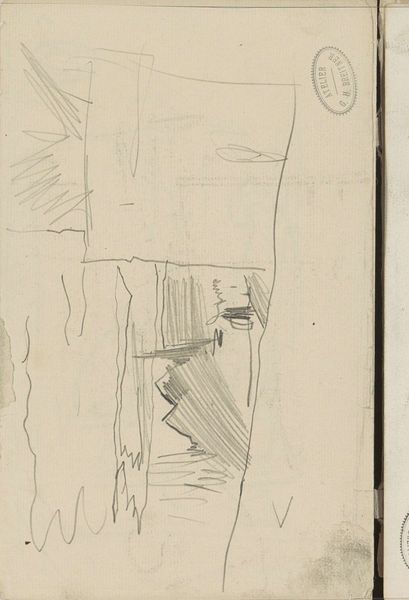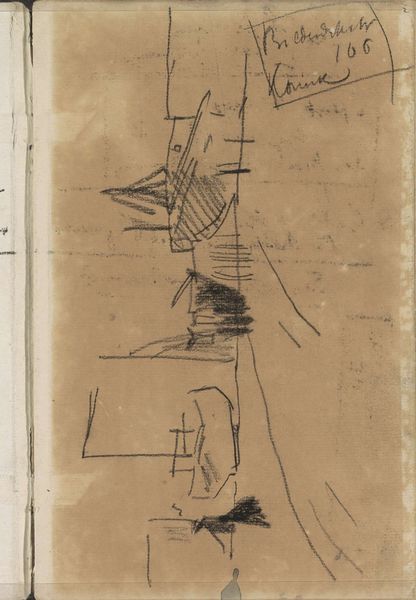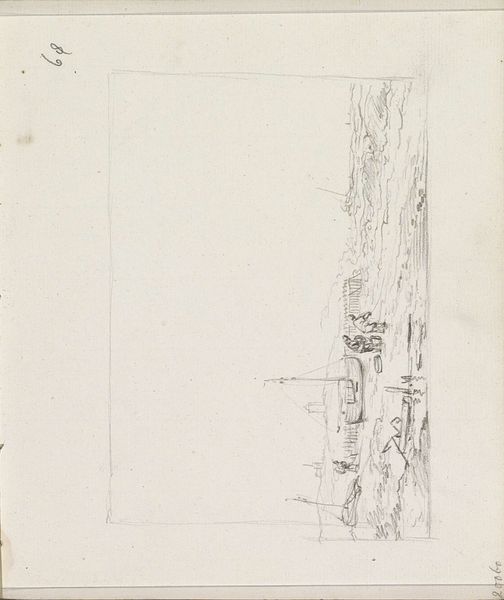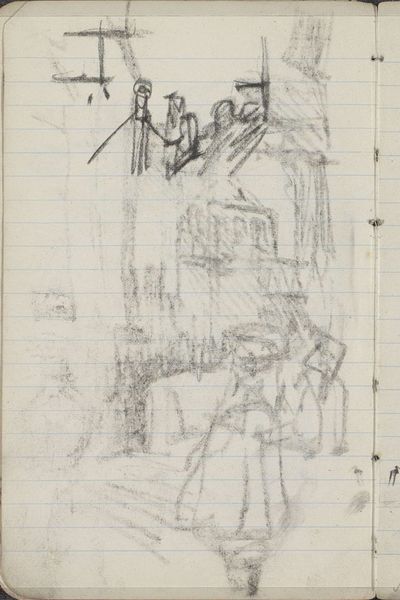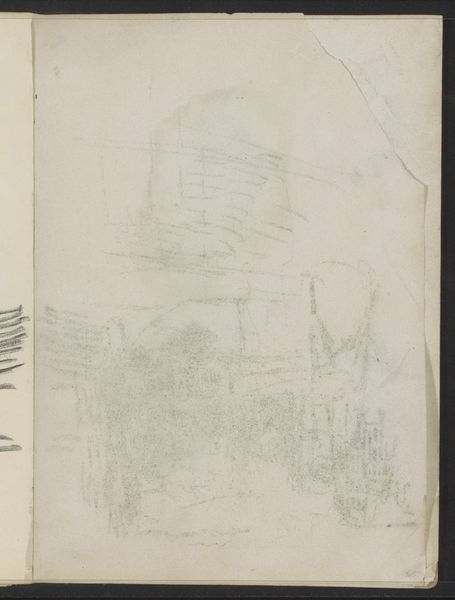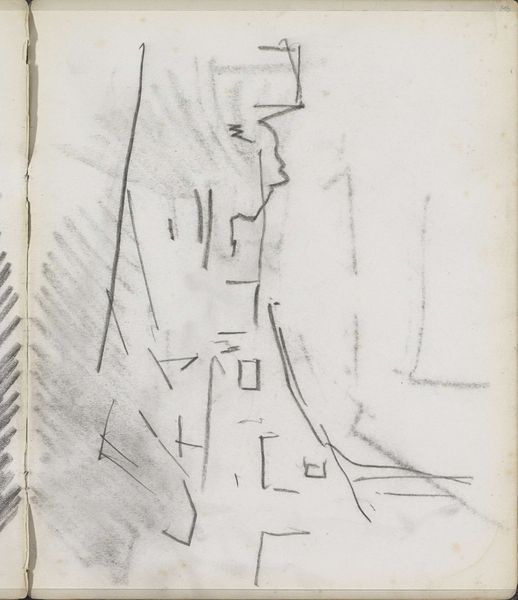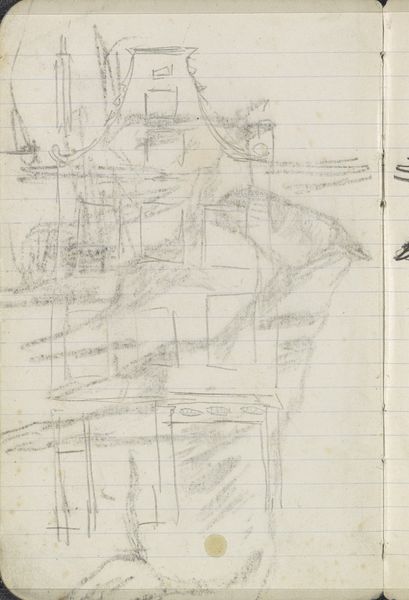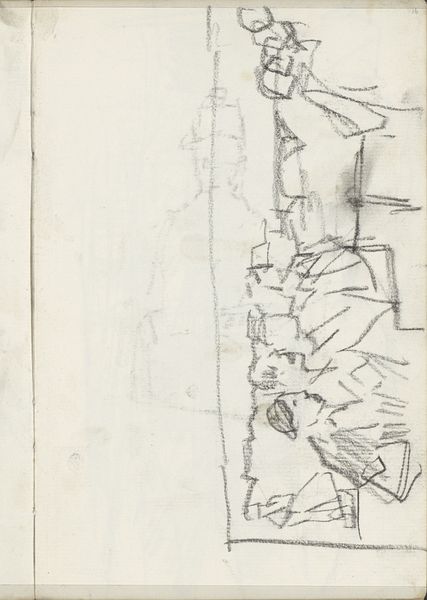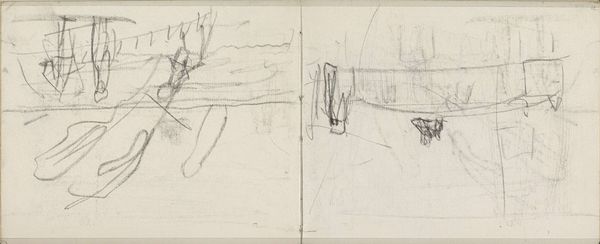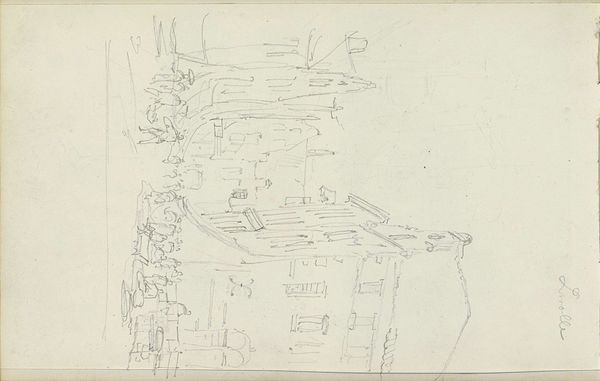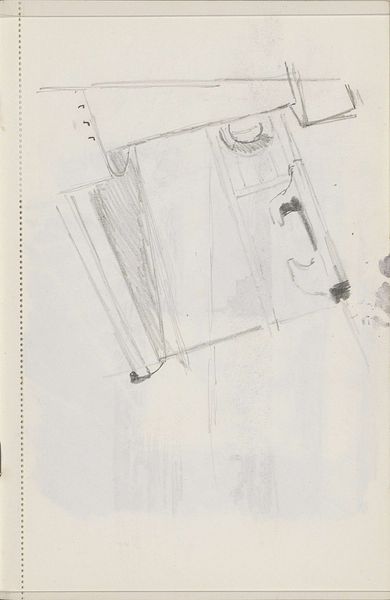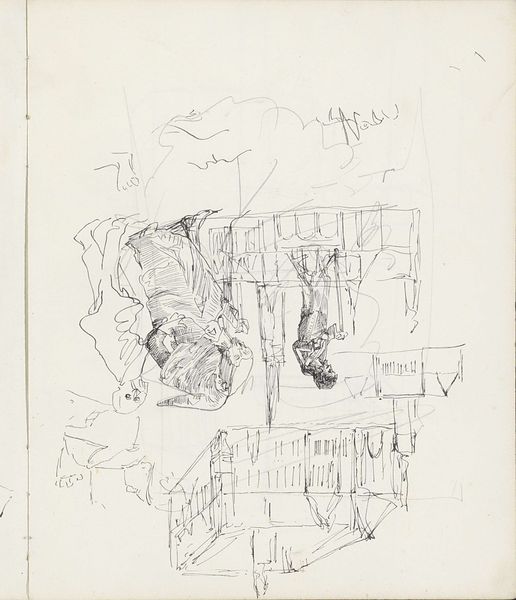
drawing, graphite
#
drawing
#
amateur sketch
#
quirky sketch
#
sketched
#
sketch book
#
incomplete sketchy
#
personal sketchbook
#
sketchwork
#
graphite
#
sketchbook drawing
#
cityscape
#
sketchbook art
#
realism
#
initial sketch
Dimensions: height 257 mm, width 202 mm
Copyright: Rijks Museum: Open Domain
Curator: Ah, here we have George Hendrik Breitner's "Toren, mogelijk van de Oude Kerk te Amsterdam," created in 1909. It’s a graphite drawing, currently residing at the Rijksmuseum. Editor: It looks…tentative. A whisper of a cityscape, unfinished. Almost like catching a half-remembered dream of Amsterdam’s architecture. Curator: Breitner was fascinated with capturing the city’s ephemeral nature, its fleeting moments. This sketch offers a glimpse into his process—the materiality of quickly captured impressions using graphite on paper. It emphasizes not just the final product, but the means of creating art itself. He produced hundreds of these, really exploring the urban landscape as a worker. Editor: A "worker," yes, but a sensitive one! See how the tower, the "Toren," looms almost like a melancholic guardian? It dominates the composition, yet the surrounding details fade into an ethereal mist. The incomplete nature only heightens the emotional impact. It hints at loss, maybe the passing of time? It’s lovely. Curator: Loss perhaps…or constant change. He lived right in the thick of Amsterdam. The paper, likely mass-produced, is another element. Breitner’s use of this common material makes you wonder how industrialization altered art consumption itself. Were sketches like this made with wider distribution or a market in mind? The medium’s cheapness suggests that sketches like this were never intended to be the “final product." Editor: I get your point, how ordinary materials reflect the wider economic and social context, the means of production. Yet I read his personal experience so clearly through these fleeting lines. Graphite allows for such intimacy. And for me that intention overshadows the banality of the materials! Curator: I suppose we are looking at both sides of the same coin, aren't we? Intimate expression captured through accessible and democratic, readily available means. It’s really both, simultaneously…a kind of materialist poetry, I would call it! Editor: A happy marriage of method and meaning, perhaps!
Comments
No comments
Be the first to comment and join the conversation on the ultimate creative platform.
